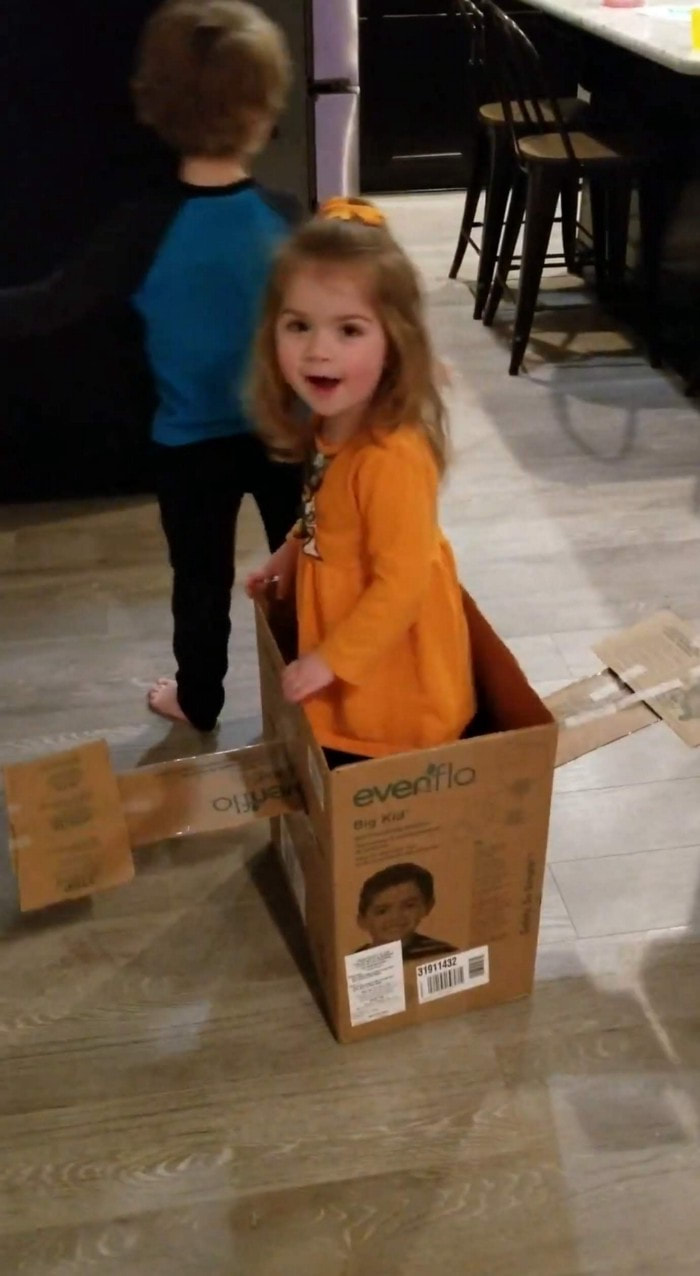|
Our son (coming up on age 6) has always seemed to speak our daughter's language (she recently turned 4). It has been an adorable thing to watch as a father as they've grown up together. Even when it has been pretty incoherent babble to our adult ears, our son has seemed to understand fairly well what his little sister was saying. Often my wife and I would struggle to interpret some of the requests of our daughter as she learned to speak. As we'd focus really hard on what she was saying, we'd try and repeat back what we heard only to completely miss the mark. Nonsense things like "you want bow tie gains?" Only to have our son sigh at us exasperatedly and say, "No, she wants a bowl of Teddy Grahams." Of course, Teddy Grahams. Recently, I got to watch as our son took this concept to the next level. Both of our kids love to create artwork of every kind. No piece of paper or Amazon box is safe in our house as everything gets quickly claimed for either an invention or artwork. In this case, our daughter clearly had a vision for something she wanted to create but was struggling with some of the pieces. She threw down the cardboard. “It won’t stick!” she screamed. Our son asked her what she wanted. “I want it to stick!” she replied. A common response in our house to this might be to use more tape, or to ask to borrow the “sticky tape”, which is the packaging tape my wife and I use for our Etsy shop packages. But in this case, he kept digging in a bit more because it wasn’t clear at that point what our daughter wanted to do. Some of her artwork is, after all, quite modern in its aesthetic and often turns out to be a giant ball of paper and tape and cardboard. So our son asked our daughter to show him what she had in mind. “I want it to look like this,” she said as she held up one of the pieces of cardboard. “Oh,” our son replied, “kind of like a wing?” “Yes!” was her reply. “I want it to be an airplane. And I want it to stick here and here. And I want to some more cardboard here.” Our son was able to get to the heart of what our daughter was trying to do. It wasn’t just about taping pieces of cardboard together like what it seemed initially. Or even taping cardboard to a box. It was really about creating an airplane that they could take turns “flying” in around the kitchen.
It’s easy, especially as product teams (whether product managers or designers or developers) to jump into problems and try and solve them. Sometimes it may seem like all we may need is some stronger tape to hold the cardboard together. Or more tape in certain spots. Those tend to be the easier or clearer solutions. Users are having problems, and we can solve them through certain new features. But if we don’t take the time to really dig into the problem, we’ll likely miss the real issue. In one of the products I worked on in the past, there was a tendency to add lots of “tape to the cardboard”. If you are familiar with Salesforce, you may be familiar with this scenario. If you are not familiar, Salesforce is a pretty powerful client relationship management tool. We were using it to manage clients, including interactions both inbound and outbound. That included calls, emails, chats, etc. If a user called in, for example, the reason for that call was selected from a list of possible options and then these reasons could be narrowed more specifically as needed by the customer service agent on the call. The data from Salesforce was utilized to understand problem areas within our products as well within our customer service, so it was constantly being monitored by a lot of people. And a lot of eyes on it meant a lot of people wanting to make changes. Managers would request features such as additional fields or dropdowns within their forms in order to better classify data. This may have seemed like the right option initially, but it was often missing the bigger picture. When too many changes were made, the quality of the previous data became useless. And at an even higher level, the overall hierarchy of the data wasn’t good, so continually adding more options wasn’t going to help. In fact, it was only going to exacerbate the problem and cause future problems down the road. Fortunately, we spoke the language of our customer service team. Whenever we heard that we needed additional fields or there was a request for a “small tweak”, we knew it was time to dig into something. We needed to really get to the heart of the issue — understanding the need to appropriately group and classify data — in order to get to the right solution. This was definitely not the easy solution. It wasn’t simply adding more tape to make things stick better. Ultimately it led to reworking the architecture of Salesforce and reimplementing different parts. It took a lot more time and effort than simply adding fields. But it was the right solution and the right thing to do. The best way to do this is to learn, over time, to speak our user’s language. For my son, this has come from a lifetime of understanding my daughter. For the rest of us, we have to really take the time to develop an understanding of our users. So that when they say “this won’t stick” we can have the ability to not only to understand the meaning behind the frustration, but to also dig into the problem in the right way in order to get to the right solution.
0 Comments
Leave a Reply. |
AuthorMy personal musings on a variety of topics. Categories
All
Archives
January 2023
|



 RSS Feed
RSS Feed
